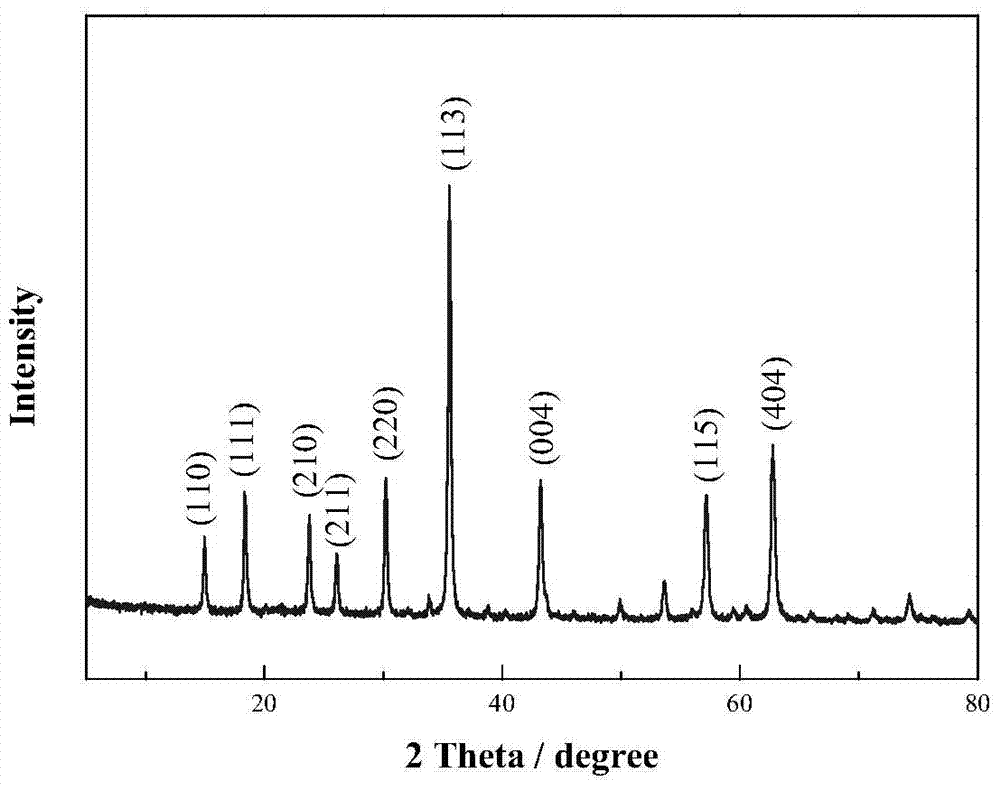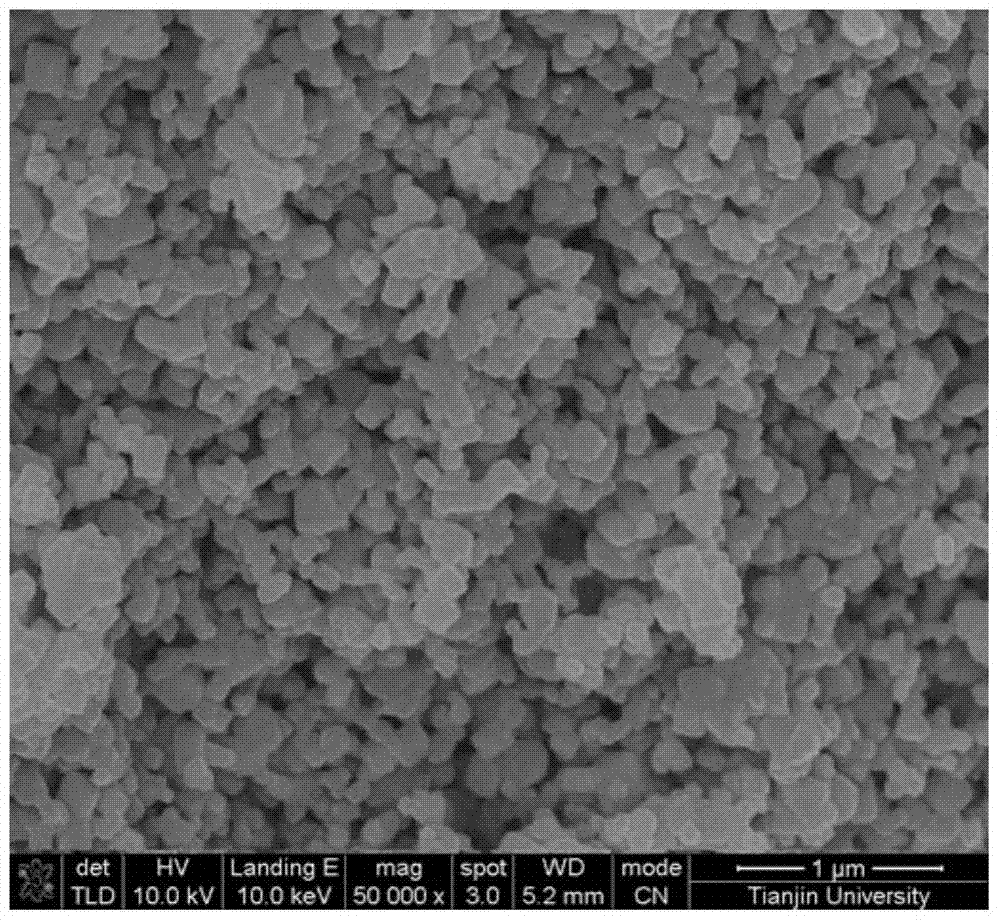Lithium-ion battery anode active material li 2 Znti 3 o 8 preparation method
A negative electrode active material and lithium-ion battery technology, applied in battery electrodes, secondary batteries, circuits, etc., can solve the problems of complex preparation steps and high cost, and achieve the effect of reduced agglomeration and uniform distribution
- Summary
- Abstract
- Description
- Claims
- Application Information
AI Technical Summary
Problems solved by technology
Method used
Image
Examples
Embodiment 1
[0034] Weigh 1.8568g analytically pure zinc acetate, dissolve it in 50mL of organic solvent absolute ethanol, stir to fully dissolve it to form a transparent liquid, called solution A; then add 5.3586g analytically pure citric acid solid to solution A to form White flocculent sediment, magnetic stirring for 0.5-1h, citric acid and Zn in the precursor 2+ And Li + The molar ratio of the sum is controlled at: citric acid / (Zn 2+ And Li + )=1.0-1.5, this liquid mixture is called B; then add 0.6281g analytically pure lithium carbonate to B, stir for 0.5-1h, then add 8.6792g analytically pure tetrabutyl titanate liquid dropwise, magnetically stir 1-2h, obtain a light yellow transparent liquid mixture, called solution C, continue to stir for 0.5-1h; then transfer solution C to a constant temperature oil bath at 80 ℃ and magnetically stir until a wet gel is formed, and drum it at 80 ℃ Bake it in an air drying oven for 24 hours to fully dry it, then grind it into a light yellow solid powd...
Embodiment 2
[0037] Weigh 1.8568g analytically pure zinc acetate, dissolve it in 50mL of organic solvent absolute ethanol, stir to fully dissolve it to form a transparent liquid, called solution A; then add 5.3586g analytically pure citric acid solid to solution A to form White flocculent sediment, magnetic stirring for 0.5-1h, citric acid and Zn in the precursor 2+ And Li + The molar ratio of the sum is controlled at: citric acid / (Zn 2+ And Li + )=1.0-1.5, this liquid mixture is called B; then add 0.6281g analytically pure lithium carbonate to B, stir for 0.5-1h, then add 8.6792g analytically pure tetrabutyl titanate liquid dropwise, magnetically stir 1-2h, obtain a light yellow transparent liquid mixture, called solution C, continue to stir for 0.5-1h; then transfer solution C to a constant temperature oil bath at 80 ℃ and magnetically stir until a wet gel is formed, and drum it at 80 ℃ Bake it in an air drying oven for 24 hours to fully dry it, then grind it into a light yellow solid powd...
Embodiment 3
[0039] Weigh 1.8568g analytically pure zinc acetate, dissolve it in 50mL of organic solvent absolute ethanol, stir to fully dissolve it to form a transparent liquid, called solution A; then add 5.3586g analytically pure citric acid solid to solution A to form White flocculent sediment, magnetic stirring for 0.5-1h, citric acid and Zn in the precursor 2+ And Li + The molar ratio of the sum is controlled at: citric acid / (Zn 2+ And Li + )=1.0-1.5, this liquid mixture is called B; then add 0.6281g analytically pure lithium carbonate to B, stir for 0.5-1h, then add 8.6792g analytically pure tetrabutyl titanate liquid dropwise, magnetically stir 1-2h, obtain a light yellow transparent liquid mixture, called solution C, continue to stir for 0.5-1h; then transfer solution C to a constant temperature oil bath at 80 ℃ and magnetically stir until a wet gel is formed, and drum it at 80 ℃ Bake it in an air drying oven for 24 hours to fully dry it, then grind it into a light yellow solid powd...
PUM
 Login to View More
Login to View More Abstract
Description
Claims
Application Information
 Login to View More
Login to View More - R&D Engineer
- R&D Manager
- IP Professional
- Industry Leading Data Capabilities
- Powerful AI technology
- Patent DNA Extraction
Browse by: Latest US Patents, China's latest patents, Technical Efficacy Thesaurus, Application Domain, Technology Topic, Popular Technical Reports.
© 2024 PatSnap. All rights reserved.Legal|Privacy policy|Modern Slavery Act Transparency Statement|Sitemap|About US| Contact US: help@patsnap.com










